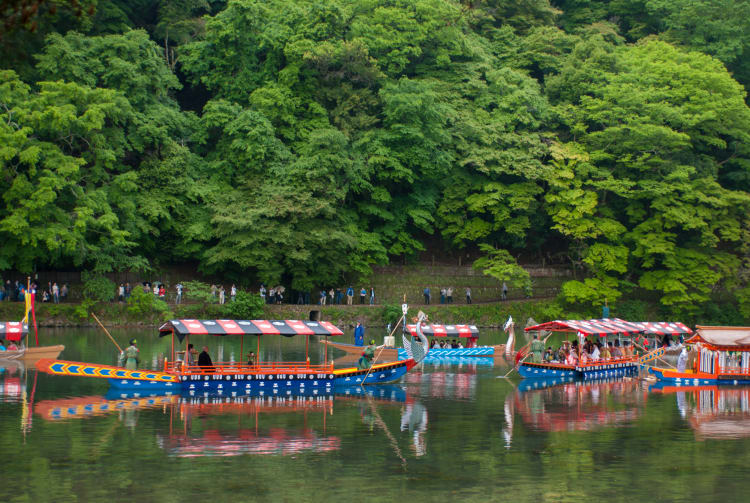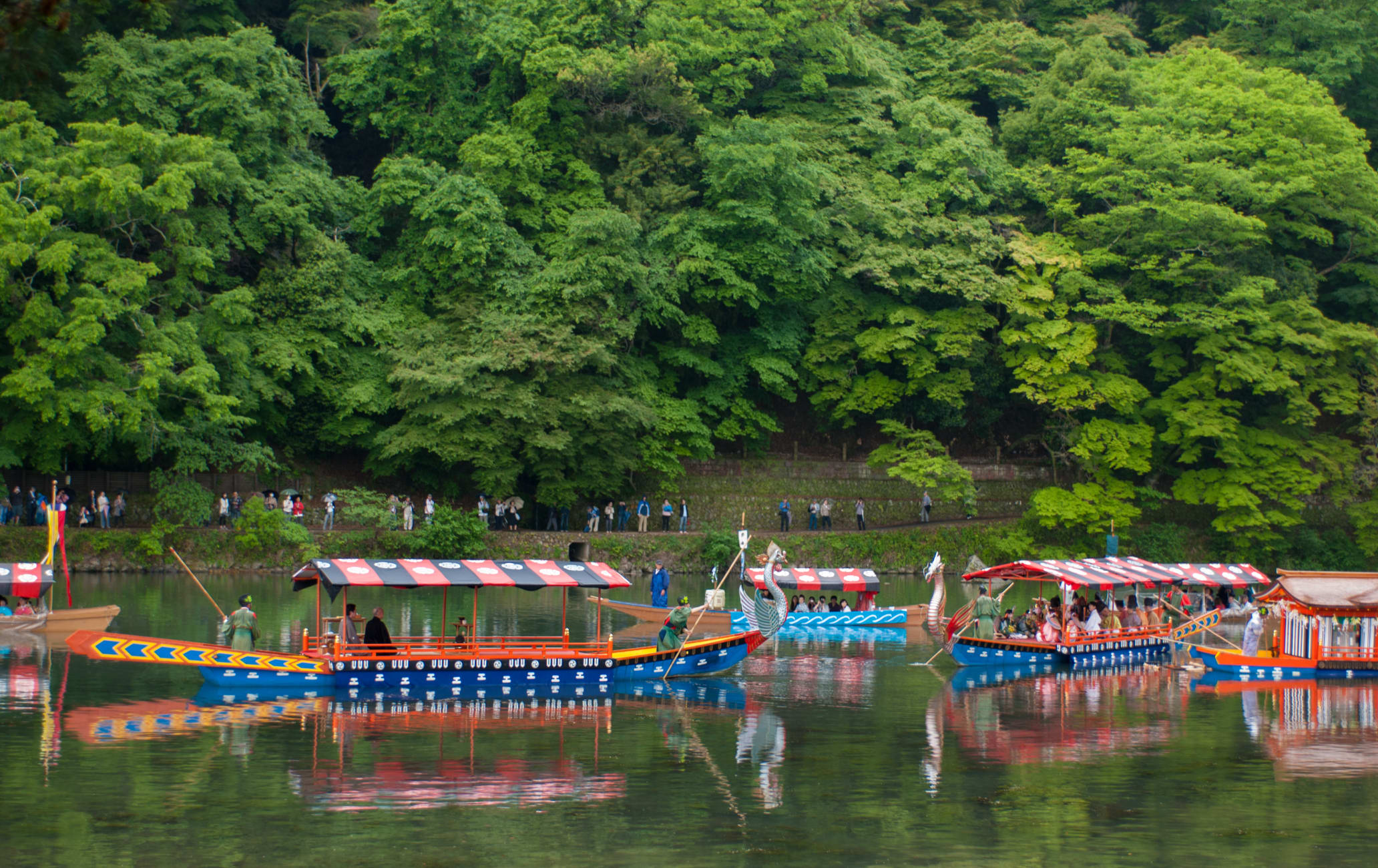See how Japan's nobility partied a thousand years ago at the Mifune Matsuri
Mifune Matsuri, which takes place in May in Kyoto's Arashiyama district, is a fascinating annual festival that re-creates imperial boating parties held by the Emperor and his court.
Don't Miss
- The dances, music, and poetry recitations performed on boats made in the ancient style
- The costumes, such as women dressed in elaborate 12-layer kimono
How to Get There
Kurumazaki Shrine is just a short walk from Kurumazaki Shrine station on Keifuku Dentetsu.
The main venue for the Mifune Matsuri is Oi river near the famous Togetsu-kyo bridge. To get there, take a train from Kyoto Station to Saga-Arashiyama Station on the San-in Main Line, which takes around 15 minutes. Walk south toward the riverside to reach Togetsu-kyo Bridge for about 10 minutes.
A May celebration like no other
The Mifune Festival re-creates these 1,000-year-old parties on the third Sunday of May, drawing up to 100,000 tourists who come to view the graceful spectacle of a fleet of twenty boats.
Traditional dances, music, and poetry recitations are performed on the prows of these old-fashioned boats, each designed with the heads of a bird or a dragon.
While the Japanese characters for Mifune literally mean three boats, it is also an allusion to the three arts practiced during the festival: Japanese poetry (waka), Chinese poetry (kanshi), and musical performance and dance (sogaku).


Enjoy the artistic festival on water
The current festival originated in 1928 and is organized by the Kurumazaki-jinja Shrine, which stands close to the river.
The shrine is dedicated to the patron deity of the performing arts and is visited by many famous stars who come here to offer prayers so that they can give better stage performances or rise in popularity. The shrine also draws many members of Kyoto's geiko (geisha) community.

The boat party cast
After a ritual held at the shrine at noon, people dressed in period costumes proceed along Arashiyama's Togetsukyo Bridge and board the boats.
At the head of this procession are high priests from the shrine. Sensu fans of assorted colors are floated on the river by women dressed in 12-layer kimono.
Also in attendance are dancers and musicians from around the area. Unlike a typical Japanese matsuri, this festival doesn't have much of a celebratory atmosphere, but it's a great way to immerse yourself in the rich history of Japan.

























































